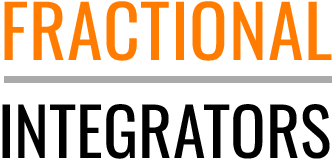In the dynamic landscape of organizational management, visionaries and leaders seek effective methodologies to streamline operations, foster innovation, and achieve sustainable growth. One such methodology gaining popularity is the Entrepreneurial Operating System (EOS), a comprehensive approach designed to align teams, clarify objectives, and drive results. In this context, integrating the Kolbe Index into the EOS framework proves to be a strategic move for leaders aiming to optimize individual and collective well-being and performance.
Understanding EOS Methodology:
The Entrepreneurial Operating System, developed by Gino Wickman, provides a holistic approach to organizational management. It comprises Six Key Components, namely Vision, People, Data, Issues, Process, and Traction. EOS focuses on simplifying complex business structures, enhancing accountability, and fostering a cohesive company culture. However, to fully harness its potential, leaders must delve into the innate capabilities and strengths of their team members, a task for which the Kolbe Index proves invaluable.
Unveiling the Kolbe Index:
The Kolbe Index, rooted in the research of Kathy Kolbe, is the only test measuring the conation part of the mind, the instinct to act. It measures an individual’s instinctive approach to problem-solving and decision-making.
It categorizes actions into four conative dimensions:

By understanding these dimensions, leaders gain insights into how team members naturally operate, allowing for better role alignment, collaboration, and overall efficiency.
Aligning Kolbe Index with EOS Components:
Vision:
Utilizing Kolbe insights during the Vision component enables leaders to align tasks with individual strengths, fostering a more dynamic and effective strategic vision.
People:
Integrating the Kolbe Index within the People component aids in team-building, ensuring that roles are assigned based on innate abilities, promoting a harmonious and productive work environment. By considering the 3 parts of the mind, affective – conative – cognitive, you can adequately evaluate the Want it – Get’s it – Can do it components the evaluation process.
Data:
Kolbe insights contribute to effective data management by recognizing each team member’s preferred approach to gathering and processing information.
Issues:
The Kolbe Index assists in issue resolution by providing a deeper understanding of how individuals naturally tackle problems, leading to more targeted and efficient solutions.
Process:
Integrating the Kolbe Index into the Process component ensures that workflows are designed to complement the conative strengths of team members, enhancing overall operational efficiency.
Traction:
Kolbe insights support the Traction component by facilitating goal setting and execution based on individual strengths, resulting in a more focused and results-driven approach.
Benefits of Kolbe within EOS:
Enhanced Productivity:
By aligning tasks with individual strengths, leaders can unlock higher levels of productivity within their teams.
Improved Communication:
Understanding how team members naturally communicate and make decisions fosters clearer and more effective communication channels.
Better Problem-Solving:
The Kolbe Index aids in problem-solving by allowing leaders to leverage the diverse problem-solving approaches within their team.
Optimized Team Dynamics:
Tailoring roles to individual strengths enhances team dynamics, promoting collaboration and reducing friction.
In conclusion, the integration of the Kolbe Index within the EOS methodology represents a strategic approach to organizational management. By recognizing and leveraging the innate strengths of team members, leaders can propel their organizations toward success in an ever-evolving business landscape. The synergy between EOS and the Kolbe Index creates a powerful framework that not only streamlines operations but also nurtures a culture of innovation and collaboration, positioning visionary leaders for sustainable growth and long-term success.
